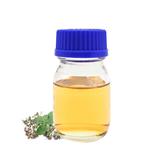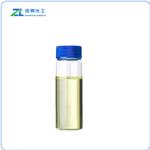- Origanum oil
-

- $0.00 / 1kg
-
2024-12-27
- CAS:8007-11-2
- Min. Order: 1kg
- Purity: 70%; 80%; 90% GC
- Supply Ability: 1000kg
- Origanum oil
-

- $10.00 / 1kg
-
2024-12-26
- CAS:8007-11-2
- Min. Order: 1kg
- Purity: 99%
- Supply Ability: 20ton
- Origanum oil
-

- $0.00 / 1Kg
-
2024-12-24
- CAS:8007-11-2
- Min. Order: 1Kg
- Purity: 99.9%
- Supply Ability: 200 tons
|
| | Origanum oil Basic information |
| | Origanum oil Chemical Properties |
| Hazard Codes | T | | Risk Statements | 22-24-36/38 | | Safety Statements | 26-36/37-45 | | RIDADR | UN 2810 6.1/PG 3 | | WGK Germany | 3 | | RTECS | RM2660000 | | HS Code | 1515.90.8090 | | HazardClass | 6.1(b) | | PackingGroup | III | | Toxicity | LD50 orl-rat: 1850 mg/kg FCTXAV 12,945,74 |
| | Origanum oil Usage And Synthesis |
| Chemical Properties | Mexican oregano is, for all practical purposes, organoleptically indistinguishable from the species Origanum vulgare
L. or Coleus ambionica. Thus, the name oregano is a general term applying to a particular herb flavor, rather than to a particular
species of plant. Oregano is a perennial herb that is either common or wild and is a vigorous grower with oval leaves on stems up to
30 in. high. It has purple flowers that appear in late summer. The part used is the leaf. | | Chemical Properties | Origanum oils are produced from the flowering herb of Mediterranean Origanum
(Lamiaceae) species, mainly Origanum vulgare L. ssp. hirtum. Spanish origanum oil is derived from Coridothymus capitatus Rchb., syn. Thymbra
capitata (L.) Cav. The oils differ mainly in their content of carvacrol and thymol,
which are major constituents. Oil with a high carvacrol
content is a yellowish-red to dark brown liquid with a spicy, herbaceous
odor, reminiscent of thyme.The color quickly turns to blackwhen in contact with iron.
d2020 0.930–0.955; n20D 1.500–1.513; α20D ?5 ° to +2 °; solubility: 1 vol in ≤4 vol
of 70% ethanol; solutions may become opalescent. Composition: ??-terpinene
3.5–10%; p-cymene 5.5–9%, thymol 0–5%, carvacrol 60–75% (Spanish type).
Annually, some 10 t each of Spanish origanum oil and of O. vulgare oil are produced,
the latter mainly in Hungary. Origanum oils are used in perfume compositions
for herbal, spicy, leathery notes and in seasoning mixtures. | | Occurrence | Found in the herb Thymus capitatus Hoffmgg. et Link and various other species of Origanum (Fam. Labiatae). | | Preparation | By steam distillation of the flowering herb. | | Definition | Extractives and their physically modified derivatives. Thymus capitatus, Labiatae. | | Essential oil composition | Screening of antimicrobial activity compounds in Lippia graveolens showed that most of compounds
were flavonoids mono- and dihydroxylated in the B ring.* Volatile oil from oregano contains carvacrol. | | Safety Profile | Poison by skin contact. Moderately toxic by ingestion. A severe skin irritant. When heated to decomposition it emits acrid smoke and irritating fumes. See also CARVACROL |
| | Origanum oil Preparation Products And Raw materials |
|